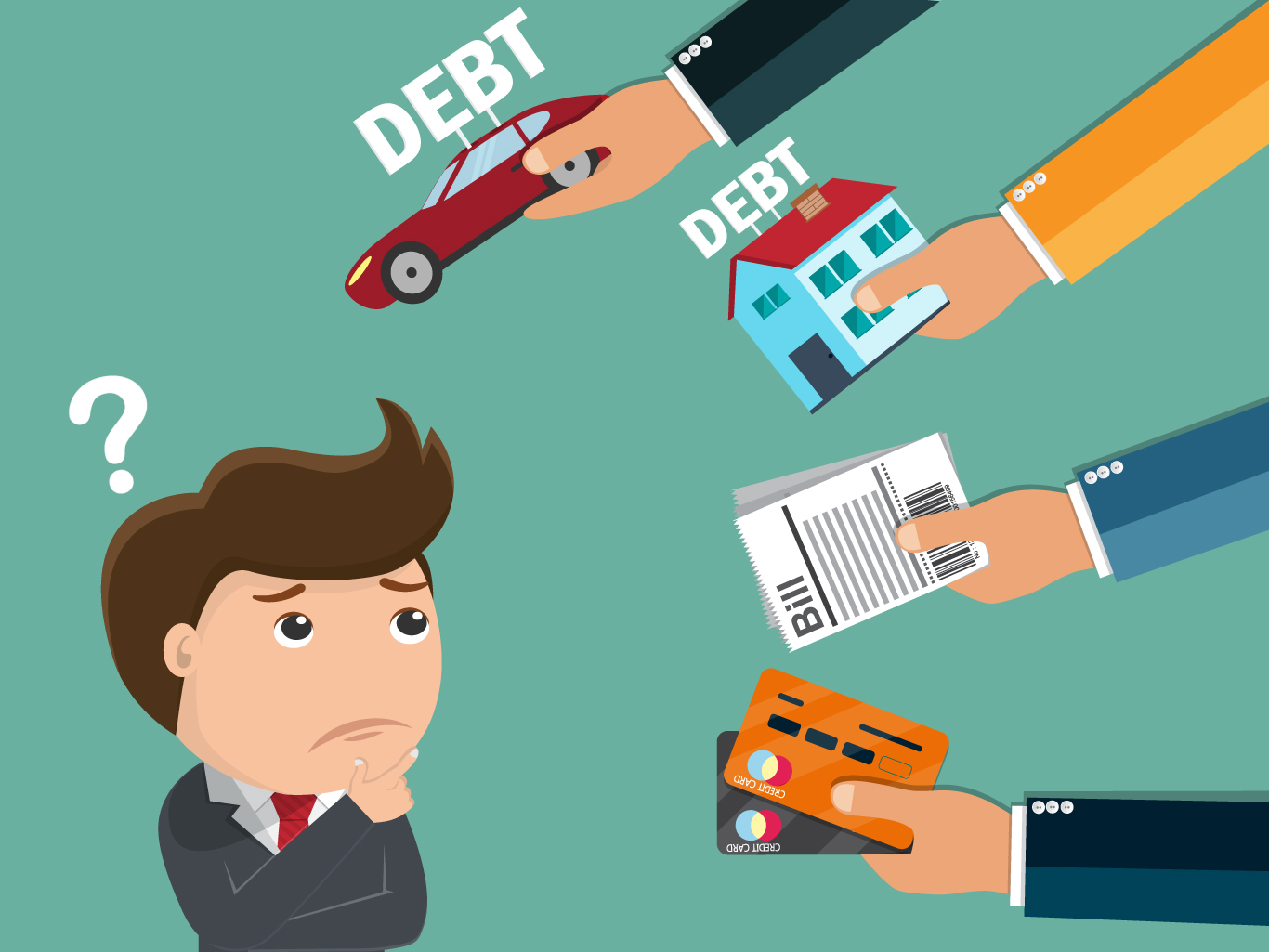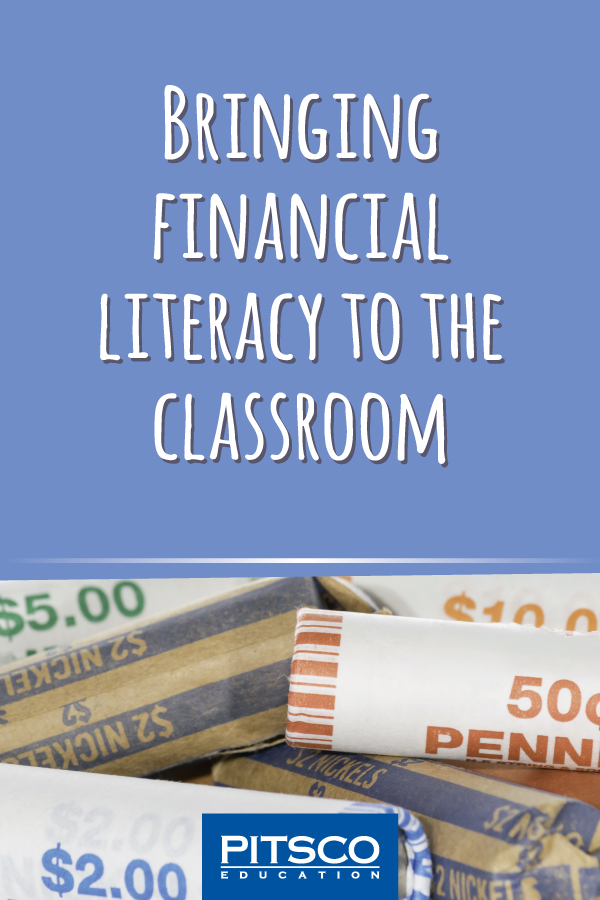Do you remember your first purchase? Something you’d been saving up for a while and were finally able to buy? We begin learning about the financial world at an early age. Even before entering school, we observe the financial decisions made by our families and we begin to gain a financial mentality. But sometimes we don’t always have role models around to demonstrate positive personal finance habits. Bringing financial terms and concepts into a formal classroom setting can help prepare students for the financial opportunities and challenges they’ll face as adults.
The following six areas are a great place to start to ensure your students have basic financial knowledge before going out into the real world:
1. Earning Income
For many, it’s hard to imagine what it would be like to live without income. And when you enter the job force, you quickly learn that increasing your income and job opportunities can be achieved by getting more education, work experience, and job skills. Although, this isn’t always beneficial when the cost of tuition or training outweighs the expected income increase.- Beginner – While exploring jobs, ask your students to make a list of their favorites, noting the income and skills associated with them. Then, explain why employers are willing to pay people to do their work for them as well as the different ways workers get paid, such as wages, salaries, and commission.
- Advanced – Every career requires education and training of some sort, so have students research a career they are interested in, compare the cost of education and potential income, and determine other lifetime decisions that might affect income. Then, explain how less education and fewer job skills tend to correspond with a lower income. Also, discuss how working at a job during school break can help students earn income, job skills, and experience that might be needed in the future.
2. Spending Money
We all love spending money, right? But if we don’t collect information, plan, and budget, the spending can be short lived, or debts might get way out of hand! There’s usually room for give and take based on each individual’s priorities, but budgeting and considering opportunity costs shouldn’t be overlooked.

- Beginner – Since most people can’t afford everything they want, learning how to make choices is a great lesson. Students can make a list of everything they want and rank them from most to least desired. Then, they can choose what to remove from the list based on a what they can afford with a given budget and how much they want the item.
- Advanced – Big purchases can be intimidating, so have your students pick an item to research, including various manufacturers and retail websites, and make an informed decision of which brand to buy and where to purchase it. See what information they find that helps the most; make sure they consider each payment method and understand the additional cost of interest or other fees.
3. Saving What You Can
This can be a hard one! Unlike the instant gratification of spending, this focuses on future purchases. And when you feel like you’re going to live forever, saving for retirement seems like something you can do later.- Beginner – Show examples of saving for a big purchase and spending in the short term and how spending makes it harder to save. You can also talk about savings plans, goals, and the steps to take in order to reach those goals. And don’t forget to explain where money can be saved and the differences, such as a piggy bank compared to a commercial bank.
- Advanced – People have to choose between immediate spending and saving for future consumption. Some people have a tendency to be impatient, choosing urgent spending over saving for the future. Talk about the consequences of spending immediately over saving. Explain interest rates paid on savings and charged on loans.
4. Using Credit
When used wisely, credit can be a great thing. You need skill to keep your credit score up, based on your credit history and expected ability to pay in the future. But debt can pile up quickly, especially when you don’t understand how interest and additional fees work.

- Beginner – Start with explaining how, when using credit, you’re paying to use someone else’s money and why the purchase can cost more because of this. You can also talk about goods and services people commonly purchase using a loan and how it’s important to repay credit to be able to get more credit in the future. Credit scores can be difficult to explain, but a good approach is to compare them to lending lunch money and not getting paid back. Would your students loan to that person again?
- Advanced – Different types of interest rates can be complicated, but a general approach can cover how longer repayment periods cause greater interest charges. And nowadays, discussions about credit cards and high interest rates are a must, especially about the risks such as bankruptcy. Provide examples of good and bad credit scores and how having a high score can be a benefit for future loans or even being hired for a job.
5. Making Investments
Investments come in many shapes and sizes, and each has a different risk and expected rate of return. For example, paying for college now can earn money in the future.- Beginner – A simple investment concept is buying an item, such as a baseball card, to sell later at a higher price. You can also explain the difference between saving and financial investing.
- Advanced – Discuss stocks, bonds, and mutual funds and compare the rates of return on a variety of different investments. Reflect on the amount of risk for each and the effect of federal, state, and local taxes on the returns.
6. Buying Insurance
Life can be unpredictable, so it might be a good idea to lower your risk by paying a little now to avoid large losses later. These risks might include loss of income, assets, health, or identity, and the cost of protection is influenced by an individual’s behavior.
- Beginner – Explain how there are risks in everyday life but that there are ways to decrease risk. For example, if a stream of people are walking both ways on a sidewalk, you have a higher risk of running into people if you walk down the middle of the sidewalk compared to walking on one side or another.
You could also give examples of when saving money might help counteract an unexpected cost. - Advanced – Discuss how insurance companies analyze risks to create insurance contracts and how premiums might be lowered by behaving in ways that show a person poses a lower risk. Then, students can figure the probability of an expensive event occurring. Also, they can look at warranties on consumer products and how they are similar to insurance.
Making a Difference
Money skills can be developed as soon as kids are able to count. They can start with earning money by doing chores and saving money to buy what they want. You can increase their financial literacy by bringing lessons into the classroom that help them understand how their decisions now can make a difference in their financial stability later.
Looking for resources on this subject?

TOPICS: IDEAS & INSPIRATION, Culture, Activities, Future Ready, 21st Century Skills, Math



